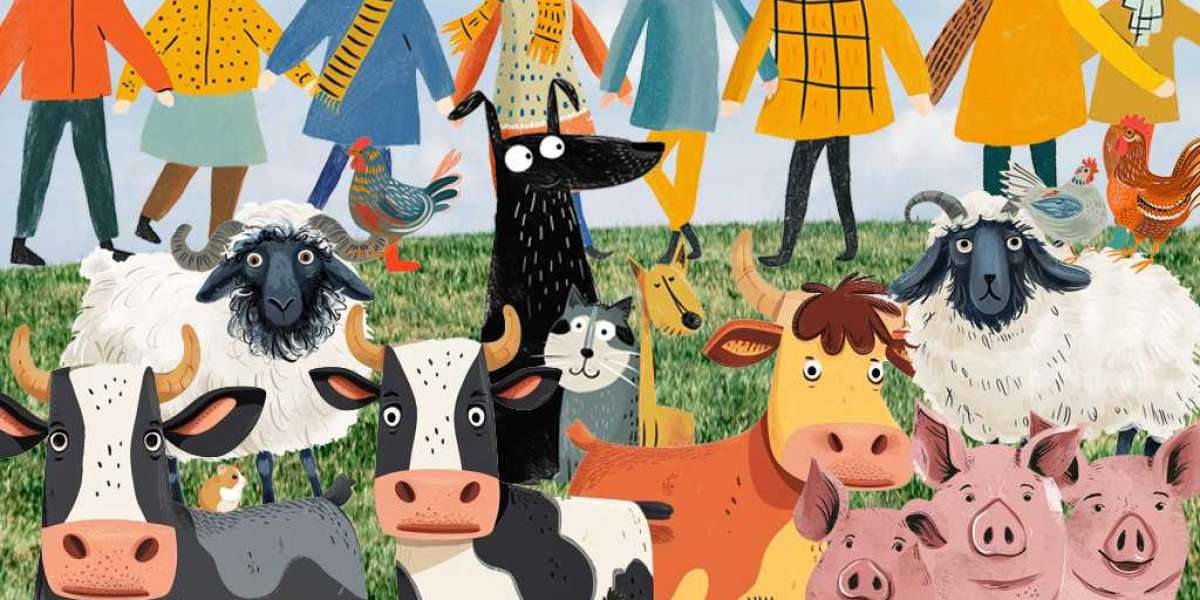Introduction
Factory farms have become the dominant method of animal agriculture in many parts of the world, driven by the demand for inexpensive meat, dairy, and eggs. While these large-scale operations are efficient in terms of production, they often come at a significant cost to animal welfare. This article explores the pervasive issue of animal cruelty in factory farms, examining the conditions that millions of animals endure and the ethical implications of these practices.
The Rise of Animal cruelty in Factory Farms
The rise of factory farming can be traced back to the mid-20th century when technological advancements and industrialization transformed agriculture. The goal was to produce more food at a lower cost to feed a growing population. This shift led to the concentration of livestock into large, densely populated facilities where animals are treated as mere units of production.
Factory farms operate on a business model that prioritizes efficiency and profit over animal welfare. Animals such as cows, pigs, and chickens are raised in confined spaces, often without access to natural light or fresh air. The industry’s focus on productivity has resulted in conditions that are detrimental to the physical and psychological well-being of these animals.
Conditions in Factory Farms
- Confinement and Overcrowding
One of the most significant issues in factory farming is the extreme confinement of animals. Chickens are often packed into battery cages so small that they cannot spread their wings, while pigs are kept in gestation crates barely larger than their bodies. Cows raised for milk or beef may be confined to crowded feedlots, standing in their waste with little room to move.
This confinement leads to a host of physical and psychological problems for the animals. The lack of space prevents natural behaviors such as foraging, nesting, and social interaction, causing stress and frustration. Overcrowding can also lead to the spread of diseases, prompting the routine use of antibiotics to keep animals alive, contributing to antibiotic resistance in humans.
- Mutilation Practices
To prevent injury and aggression among stressed animals, factory farms often resort to mutilation practices. Chickens may have their beaks trimmed, pigs may have their tails docked, and cows may be dehorned, often without anesthesia. These procedures are painful and traumatic, causing long-term suffering.
The rationale behind such practices is to maintain control over animals in unnatural and overcrowded conditions. However, they highlight the underlying issue of treating animals as commodities rather than sentient beings deserving of respect and care.
- Neglect and Abuse
Neglect and abuse are prevalent in factory farms due to the emphasis on efficiency and cost-cutting. Animals may be denied veterinary care, left to suffer from untreated injuries or illnesses. Workers, under pressure to meet production targets, may resort to abusive handling techniques, causing further harm to the animals.
Investigations and undercover reports have exposed shocking instances of cruelty, including workers beating, kicking, and throwing animals. These abuses often go unnoticed or unpunished, as factory farms operate with minimal oversight and accountability.
Ethical Implications
The treatment of animals in factory farms raises significant ethical concerns. Many argue that animals have intrinsic value and deserve to be treated with dignity and compassion. The suffering endured by animals in factory farms is inconsistent with these principles, prompting calls for reform in the industry.
Moreover, the industrialization of animal agriculture has broader ethical implications for the environment and public health. Factory farming contributes to environmental degradation, including deforestation, water pollution, and greenhouse gas emissions. The overuse of antibiotics in these operations poses a significant risk to human health, as it contributes to the rise of antibiotic-resistant bacteria.
Moving Toward a More Humane System
Addressing animal cruelty in factory farms requires a multifaceted approach that includes legislative reform, consumer awareness, and the promotion of alternative farming practices.
- Legislative Reform
Governments can play a crucial role in improving animal welfare by enacting and enforcing stricter regulations on factory farms. Policies that mandate larger living spaces, prohibit painful mutilation practices, and ensure access to veterinary care can significantly reduce animal suffering.
- Consumer Awareness
Consumers have the power to drive change through informed purchasing decisions. By choosing products labeled as "certified humane" or "free-range," consumers can support farms that prioritize animal welfare. Education and awareness campaigns can help shift consumer preferences toward more ethically produced food.
- Alternative Farming Practices
Promoting alternative farming practices, such as pasture-based and regenerative agriculture, offers a more humane and sustainable approach to animal husbandry. These systems prioritize the well-being of animals, allowing them to express natural behaviors and live in more natural environments.
Conclusion
Animal cruelty in Factory Farms is a pervasive issue that demands urgent attention. The conditions in these facilities highlight the ethical challenges of modern agriculture and the need for reform. By advocating for legislative change, raising consumer awareness, and supporting alternative farming practices, we can work toward a more humane and sustainable food system that respects the welfare of all living beings.
Top of Form
Bottom of Form








